To maximize your Airbnb or other vacation rental site revenue, you may use dynamic Pricing.
When it comes to introducing new pricing strategies in your organization, it’s a good idea to start by looking at the essential facts and statistics. And while we’re on the subject of statistics, hosts and property managers that have implemented dynamic Pricing say that their earnings have increased by 10-40%.
Are you ready to improve your price and make sure you’re not losing money? Continue reading to learn more about how to set up dynamic Airbnb pricing for your listing.
What Is Airbnb Dynamic Pricing?
Pricing for your short-term rental property that varies in real-time depending on market movements is known as dynamic Pricing. Changes in demand and supply, seasonality, local events, and other factors contribute to these swings.
Dynamic Pricing entails more than merely charging varying prices during peak and off-peak seasons. Keep your pricing dynamic by adjusting them in response to even minor changes in the price-influencing elements.
What Is an Airbnb Dynamic Pricing Tool, and How Does It Work?
Other Proptech options worth considering include vacation rental software, the most common technology used by hosts. A dynamic pricing tool is a piece of software that allows hosts and property managers to automatically adjust the cost of their listings.
You don’t have to spend a lot of time analyzing market trends to determine the optimal price for your listing right now. A dynamic pricing tool examines the most relevant market data points and updates your rates every 24 hours using a clever algorithm.
Why Using a Flat Pricing Strategy for a Short-Term Rental Business Isn’t a Good Idea.
When it comes to Pricing, a set-it-and-forget-it strategy may seem to be simple to apply. However, if you’re serious about growing your company, this method won’t get you very far. Let’s look at why flat pricing techniques aren’t the ideal option for your vacation rental company.
1. Optimizing just for the highest possible occupancy rate
Assume John is an Airbnb host who seeks the highest possible occupancy rate. He has his calendar filled for months and charges a somewhat lesser fee than his rivals. John finds this technique straightforward and convenient since he doesn’t change his price based on the season or day of the week.
However, when he calculates his overall profit for the quarter, he discovers that his competition Mike has made a larger profit. Mike owned a comparable home but had fewer visitors over the same period.
Mike’s higher earnings are due to his use of an Airbnb dynamic pricing mechanism. According to the tool, Mike’s Pricing should be raised immediately before an event he isn’t aware of.
2. Excessively overpricing your rental when demand is low
John chooses to raise his prices to improve his earnings. It seems to be a successful technique at first, but he quickly notices that bookings are coming in more slowly.
His income is being impacted not just by a drop in demand but also because his home seems to be pricey to prospective visitors. This discourages people from making a reservation, and they prefer rivals’ listings over John’s.
3. Changing your prices only based on seasonality
John studies the low and high seasons in his region. For the summer and winter, he sets two distinct Pricing. Even if he maintains a reasonable occupancy rate, he loses potential money.
The Solution: Invest in a dynamic pricing technology that allows you to make data-driven choices.
So, if you want to maintain your price competitiveness and maximize your rental’s earning potential, you need to dive further into market statistics. On the other hand, hosts seldom have the time or expertise to undertake data analysis.
This is when a dynamic pricing mechanism like Airbnb comes in handy. This study is done for you by a dynamic pricing tool. It adjusts your rates automatically, ensuring that your Pricing remains competitive at all times and that your listing does not lag.
What Are the Drawbacks of Using the Airbnb Smart Pricing Tool?
Airbnb Smart Pricing is a built-in function that dynamically adjusts the price of a property to meet market demand depending on parameters like the kind and location of your offering, season, demand, and so on. This function is available to Airbnb hosts for free. However, many hosts claim that Airbnb Smart Pricing has several drawbacks, including:
- Prioritization of occupancy above income – Because Airbnb makes money from commissions on bookings, the more reservations you have, the more money you make.
- The technology also serves the interests of visitors – Airbnb seeks to get more people to use its network by lowering vacation home costs. As a result, price ideas seem to be less than ideal.
- Lower nightly rate – You may find yourself charging less than your home is worth. There will be a decrease in income as a consequence of this.
- Lack of customization – When utilizing Airbnb Smart Pricing, you won’t be able to specify a basic price for your property. Furthermore, there is no way to add price restrictions to the Pricing recommendations given by this application. For example, you won’t be able to establish discounts for last-minute reservations.
Unlike Airbnb Smart Price, alternative pricing systems employ more advanced algorithms and take into account more data points to deliver more precise pricing predictions. Furthermore, they allow for additional flexibility, allowing you to maintain control over your prices.
What are the factors that a dynamic pricing tool considers?
A dynamic pricing tool considers a variety of variables and market trends that vary daily.
1. Seasonality
It’s no secret that vacation rental revenue is subject to seasonal fluctuations. Using an Airbnb dynamic pricing tool, on the other hand, may assist in mitigating the impact of seasonal adjustments.
That is, a tool will provide the optimal low-season price options, guaranteeing that your listing will still attract reservations. Your property will be priced to optimize your profit and achieve ideal occupancy during the busy season.
2. Demand and Supply
In addition, a dynamic pricing tool examines supply and demand in your region. If it’s dropping, the tool will suggest cutting your prices to attract more visitors. However, if demand increases, your price is changed to take advantage of the increased demand.
3. Day of the Week
Weekends are more likely to be booked. Thus, your nightly rates will be more on weekends than they are on weekdays. A weekday listing will be more expensive if your home is near a concentration of business travelers.
4. Special occasions
Because unique events tend to draw more visitors, it’s critical not to lose out on these brief surges in demand. If a major event occurs in your area, a dynamic pricing tool will propose that you boost your charges.
5. The number of days remaining to make a reservation
A tool will look at how long in advance the reservation is made. In this approach, a last-minute reservation will be less expensive than a reservation booked in advance.
6. Your listing’s performance in the past
One of the important elements your pricing solution will keep an eye on is historical data on how the property has performed over time. Furthermore, it will continuously analyze and learn previous patterns and booking behavior in various markets throughout the globe to provide data-backed price recommendations.
7. Occupancy of competitors
A tool examines the future occupancy of your competition ads to determine days that are in high demand. If they don’t have any inventory available but travelers are still looking for vacation rentals for these dates, a tool will recommend charging a higher nightly fee for your ad.
8. Price comparisons with competitors
Without completing exhaustive research on your rivals’ nightly rates, how can you maintain your price competitiveness? A dynamic pricing tool will take care of this for you, adjusting your rates based on your rivals’ prices so you don’t miss out on any possible money.
9. Facilities
Because Airbnb hosts’ facilities at their rentals are important to visitors, a pricing tool will consider them when generating price recommendations.
10. Review quantity and quality
When visitors search for a place to stay on Airbnb, reviews are crucial. If you have a lot of 5-star ratings, you may charge more than a rival who has fewer guest reviews.
What Are the Advantages of a Dynamic Pricing Tool?
Dynamic pricing tools, as previously said, provide suggestions on your nightly fee. However, it isn’t the only advantage you may make use of.
1. Reduce the amount of time spent examining market data.
Airbnb hosts don’t frequently have time to collect data and modify their Pricing in response to market variations since property management requires a lot of multitasking. Nonetheless, if you aim to get your company up and running and expanding, you must do so.
You don’t need to spend time on analysis or pay a data scientist when using a dynamic pricing solution. A clever software solution will handle data gathering and analysis quickly and efficiently.
2. Change the Pricing on your booking calendar automatically.
After setting up a pricing tool, you won’t have to log in to each vacation rental site individually to alter the price for your homes. Your revised prices will be instantly sent to your P.M.S. or booking calendars using a tool.
3. Make your occupancy rate as high as possible.
When you price your listing correctly, it will appeal to more people. We’ve all seen what happens when a host charges an exorbitant fee: their houses lie vacant.
This might signal that you’re charging less than you should be if your rental is completely booked months in advance. Low Pricing might bring in undesirable guests, who you should try to keep away.
You can keep your reservations constant while getting bookings from your target visitors if you have a pricing tool on hand.
4. Make the most of your earnings
Dynamic Pricing ensures that your rental will remain competitive by adjusting its Pricing in response to changes in the market. More demand and local events in your region will result in increased income for your business.
5. Boost your Airbnb reputation
It’s critical to keep your booking schedule up to date if you want to be seen on Airbnb. Airbnb considers an updated calendar to be one of the ranking elements. Because Airbnb’s pricing technology adjusts your prices daily, your listing will appear higher in the search results.
6. Automate your Pricing, as well as other operational chores.
Vacation rental software packages provide a variety of pricing tools. This makes it easier to manage all of your listings in one spot. You may automate a variety of everyday operations, including guest communication, cleaning, and staff management, in addition to your price management.
The 5 Most Effective Dynamic Pricing Tools
Listed below are the most effective dynamic pricing systems for your perusal. Find the finest tool for your business’s needs by browsing the list.
1. Smart Rates from AirDNA
AirDNA Smart Rates analyses real-time market demand and supply to deliver individualized price suggestions based on data from over 10 million vacation rentals on Airbnb and Vrbo. The tool explains the logic behind each price advice and shows you how each recommendation was derived.
You may also pick how aggressively you want to price your short-term rentals by setting minimum and maximum price discounts and how aggressively you want to market your short-term rentals. You may also get price data from your rivals on the MarketMinder dashboard. This will allow you to stay one step ahead of your competitors at all times.
With Lodgable you get all of the power of AirDNA included at no extra charge when you sign up for our software.
2. Wheelhouse
The wheelhouse is a dynamic pricing solution used by both short-term rental hosts and major property management companies with hundreds of listings. The Wheelhouse Pricing Engine, built by a team of Ph.D. data scientists and revenue management professionals, analyses over 10 billion data points every day.
The application also includes market analyses and comp sets to help you better understand the industry and make data-driven choices.
Wheelhouse provides a variety of price options, including:
- 1% of total revenue
- $19.99 a month per listing
- Business plan for portfolios with more than 100 listings.
3. Pricelabs
Pricelabs is a web-based vacation rental dynamic pricing software solution. The technology allows hosts to increase their income by using data-driven insights and automated rules. Based on market availability and demand, seasonal and weekday patterns, special events and holiday forecasts, and the number of days available to book, prices are suggested.
Apart from that, Pricelabs enables you to make mass pricing changes. Hosts that maintain several listings would appreciate this option. Pricelabs also allows you to implement dynamic min-stay criteria to avoid gaps in your schedule and price optimization.
The tool’s fee begins at $19.99 per listing and decreases as you manage additional listings. You may estimate your Pricing using Pricelabs’ calculator.
4. DPGO
DPGO is an artificial intelligence-powered dynamic pricing tool that creates a price plan based on daily market data. The program employs a clever algorithm that improves with each passing day, resulting in increased profitability and more successful pricing tactics.
DPGO makes recommendations based on market demand and supply, trends, events, and holidays, among other factors. The service also offers a growth performance analysis, which calculates the aggregate score of each of your listings and gives recommendations on how to enhance them.
5. Beyond Pricing
Beyond Pricing is a well-liked revenue management tool for short-term rental hosts and managers looking to increase their profit margins. Beyond Pricing supports more than 340,000 listings in over 7,500 locales. The program uses a dynamic pricing algorithm to ensure that your properties are booked at the greatest possible price at best possible time.
You may use the Health Score feature to analyze how your listing is doing compared to your competitors and make any required changes.
You may use the Bulk Actions tool to apply price suggestions to all of your listings at once without having to go through each one individually. You may also make use of the Beyond Pricing platform’s Guidance feature.
The Beyond Pricing team will assist you in developing the finest revenue management plan for your listings and will walk you through every step of the process.
Increase your profits with Lodgable
Controlling all facets of your hosting routine without automation seems just as archaic and unproductive as maintaining a flat price plan and manually managing your Pricing.
You should utilize vacation rental software like Lodgable to do more than simply price optimization. Lodgable Can help you help with a variety of other everyday tasks, such as:
- From a single dashboard, manage various accounts and listings on the leading vacation rental sites.
- Preventing duplicate bookings by synchronizing reservations across several platforms.
- Connecting your Stripe account to Lodgable allows you to receive payments and generate invoices.
- Creating and assigning cleaning jobs to your staff, as well as monitoring their progress in real-time
- Using a direct booking site to manage your direct bookings
- Get real market data using our direct integration with AirDNA









